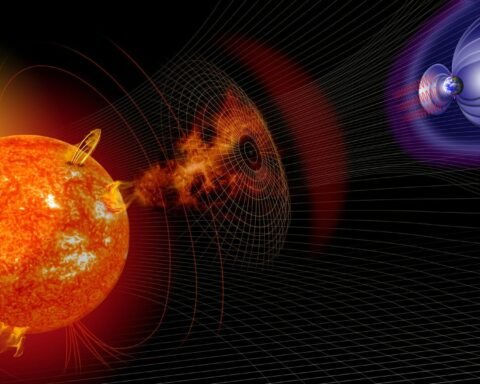Full Moon • Lunar Phase • 2022 • Supermoon • Astronomy
The night sky has always held a certain allure, captivating humanity for centuries. Among the celestial wonders, the full moon stands out, a beacon of beauty and mystery. In this article, we delve into the captivating realm of lunar phases, focusing on the full moon in the year 2022 and exploring its various dimensions.
I. Introduction
A. Definition of a Full Moon
The full moon occurs when the Earth is positioned directly between the sun and the moon, with the moon fully illuminated.
B. Fascination with Lunar Phases
Humans have been entranced by the moon’s phases, attributing cultural, spiritual, and even scientific significance to its cycles.
II. Understanding Lunar Phases
A. Different Phases Explained
1. New Moon
The beginning of the lunar cycle, marked by an entirely shadowed moon.
2. Waxing Crescent
A slender crescent appears as the moon moves towards full illumination.
3. First Quarter
Half of the moon is visible, marking the first significant phase.
4. Waxing Gibbous
The moon becomes more illuminated, approaching fullness.
5. Full Moon
The moon is fully illuminated, creating a mesmerizing sight.
6. Waning Gibbous
The process of illumination starts to decrease.
7. Last Quarter
Half of the moon is visible again, but on the opposite side.
8. Waning Crescent
A diminishing crescent leads to the next new moon.
III. Supermoons Unveiled
A. What Sets Supermoons Apart
Supermoons occur when the moon is at its closest point to Earth, appearing larger and brighter.
B. Impact on Astronomy Enthusiasts
Astronomy enthusiasts eagerly await these events for exceptional viewing opportunities.
IV. Noteworthy Full Moon Events in 2022
A. Highlighting Significant Dates
1. Special Lunar Eclipses
Certain full moons in 2022 coincide with lunar eclipses, adding a celestial spectacle.

2. Rare Celestial Alignments
Unique planetary alignments enhance the visual appeal of full moons in specific months.
V. Historical Significance of Full Moons
A. Cultural Beliefs and Traditions
Various cultures attribute diverse meanings to full moons, influencing traditions and rituals.
B. Influence on Folklore and Mythology
Explore how full moons have shaped myths and folklore across different civilizations.
VI. Tips for Full Moon Observations
A. Best Times for Viewing
Optimal times for observing the full moon and enjoying its splendor.
B. Recommended Observational Tools
Basic tools and equipment to enhance your full moon viewing experience.
VII. Capturing the Beauty: Full Moon Photography
A. Essential Equipment and Techniques
Photography tips for capturing the ethereal beauty of the full moon.
B. Showcasing the Supermoon Effect
Maximizing photographic opportunities during supermoons.
VIII. Full Moon and Human Behavior
A. Debunking Myths about Lunar Influence
Separating fact from fiction regarding the moon’s impact on human behavior.
B. Scientific Studies on Moon-Related Effects
Examining scientific studies that explore the moon’s potential influence on Earth.
IX. Astrology and Full Moons
A. Exploring Astrological Perspectives
How astrologers interpret full moons and their potential effects on individuals.
B. Separating Fact from Fiction
Analyzing the scientific validity of astrological claims regarding full moons.
X. Impact of Light Pollution on Full Moon Visibility
A. Understanding Light Pollution
How urbanization affects the visibility of the full moon and strategies for overcoming it.
B. Strategies for Optimal Viewing
Tips for finding locations with minimal light pollution for a clearer view.
XI. Full Moon Rituals
A. Modern Practices and Traditions
How people today incorporate full moon rituals into their lives.
B. Creating Personal Connections
Establishing a personal connection with the full moon through rituals and practices.
XII. Educational Opportunities: Full Moon Workshops and Events
A. Engaging in Astronomy Workshops
Participating in workshops to deepen your understanding of lunar phenomena.
B. Participating in Moon-Related Events
Joining events and gatherings dedicated to full moon exploration and appreciation.
XIII. The Technological Side: Full Moon Livestreams
A. Virtual Observations and Interactive Sessions
How technology enables virtual moon observations, making it accessible to a global audience.
B. Accessibility and Inclusivity in Astronomy
Exploring efforts to make astronomy and lunar events inclusive through technology.
XIV. Future Predictions: Full Moons in the Coming Years
A. Anticipating Noteworthy Lunar Events
A glimpse into upcoming full moon events and celestial occurrences.
B. Advancements in Lunar Exploration
Recent and upcoming missions that promise to unravel more mysteries of the moon.
XV. Conclusion
Summing up the enchantment of full moons and their enduring significance in human culture and scientific exploration.
Frequently Asked Questions
- Can I see a full moon every month? Yes, a full moon occurs approximately once a month.
- Are supermoons really that different from regular full moons? Supermoons appear larger and brighter due to their closer proximity to Earth.
- What’s the best time to observe a full moon? The best time is during the night when the moon is high in the sky.
- Do full moons have any scientific influence on Earth? While myths suggest so, scientific evidence supporting this is limited.
- Are there any specific traditions associated with full moons? Many cultures have unique traditions tied to full moon phases, often rooted in folklore.







